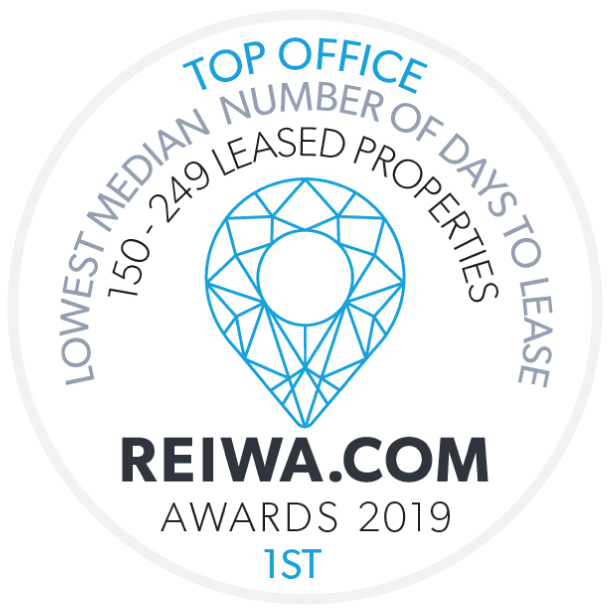Rental Yield Calculation: How to Work Out Rental Yield for Your Perth Investment Property
One crucial aspect of evaluating a property’s investment potential is rental yield calculation.
As a property investor or landlord, calculating the rental yield is a vital step for you to ensure that your investment is worthwhile.
Rental yield is a fundamental metric that measures the return on investment generated from a property. By calculating how much you are spending on and gaining from the property, you’ll be able to assess the profitability of your business model.
In this article, we will help you understand what rental yield is, how to calculate it, and how you can maximise it.
What is rental yield?
Rental yield is a financial metric used to measure the return on investment of a rental property. It refers to the income earned from renting out a property, expressed as a percentage of the property’s value.
There are two types of rental yield that are calculated differently: gross and net. Gross rental yield takes into account the rental income only, while net rental yield also considers the overhead expenses of owning the property and making it suitable for tenancy.
Understanding the rental yield of your investment property is vital for you to be able to decide whether your property is profitable..
Calculating gross rental yield and net rental yield
To calculate rental yield, you need to determine the income generated from the property in relation to its market value. The rental yield can be calculated as either gross or net, depending on whether or not property-related expenses are factored into the calculation.
How to calculate gross rental yield
To calculate gross rental yield, follow these steps:
- Determine the total annual rent that you would charge a tenant.
- Divide the annual rent by the value of the property.
- Multiply the result by 100 to calculate your gross rental yield percentage.
For instance, if you charge $24,000 in annual rent and the property is worth $400,000. Your gross rental yield would be calculated as ($24,000 ÷ $400,000) X 100 = 6%.
How to calculate net rental yield
To calculate net rental yield, you need to factor in all the property expenses and fees related to owning the property. Follow these steps:
- Consider all the fees and expenses of owning the property.
- Determine the total annual rent you will receive from the property.
- Deduct the total expenses from the annual rent amount
- Divide that figure by the property’s value.
- Multiply by 100 to get your net rental yield percentage.
For example, if you receive $36,000 in annual rent, but you pay $10,000 in property-related expenses, and the property is worth $600,000, your net rental yield would be calculated as (($36,000 – $10,000) ÷ $600,000) X 100 = 4%.
7 Tips to maximise rental yield
While your rental yield will always have a ceiling, there are things you can do that will help you earn more from renting out your property.
If a higher rental yield is part of your investment goals, here are seven great tips for you to consider:
1) Pick a property with high-profit potential
Choosing the right type of investment property can make a huge difference in your rental yield. Properties that are in good condition, have a modern layout and are located close to vital areas tend to be more attractive to renters. Additionally, choosing a property with multiple bedrooms,s or bathrooms or parking options can increase your rental income.
2) Choose an appealing location
One of the most important factors when it comes to rental yield is the location of the property. Try picking a location that’s in high demand, with strong locational attributes. and offers good rental returns. Areas that are close to public transportation, shopping centres, collegesschools, commercial centers office complexes, and hospitals are favoured by tenants.
A property in a desirable location is likely to attract high-qualitymore tenants and higher rentsenable you to charge higher rents.
3) Consider accepting pets
Many renters have pets, and if you’re willing to accept pets, you’ll have a larger pool of potential tenants. Just make sure that you regulate pets at the property through the special conditions of the lease. ownership by communicating your rules to tenants.
4) Assess property renovations
If you want to increase your rental yield, consider refreshing or renovating your property. This could include repainting the walls, updating the flooring, repairing the roof and window treatments or, or replacing the furniture and outdated appliances. A well-maintained property will attract more tenants, allowing you to charge a premium rent.
5) Add a parking space
If your property is located in an area where parking is at a premium or challenging to find, consider including a car parking space as this will attract more tenants.
6) Utilise renewable energy resources
Using renewable energy sources, such as solar panels, can be a great way to save money on utility bills and attract eco-conscious tenants. Solar panels are becoming increasingly popular, and tenants are willing to pay a premium for properties that offer energy-efficient features and help their household budget.
7) Consider working with a property manager
Managing a rental property can be demanding, at least if you want it to be appealing to potential tenants. The good news is you can hire a property manager to take care of all the day-to-day tasks, including finding tenants, collecting rent, and handling repairs. This can help you maximise your rental yield.
What is a good rental yield?
There’s no exact number that reflects what a good rental yield should be as it depends on several factors, like the location of the property, the type of property, the rental demand in the area, and the prevailing market conditions. However, generally speaking, a rental yield of 5% or higher is considered a good rental yield.
If the rental yield is low, say less than 4%, this could implicate that the property is overvalued or that holding costs could dimmish your upside. Similarly, if the rental yield is too high, say over 8%, the property might be undervalued.
Also, keep in mind that the property market isn’t always stable, and a property that generated a low or high rental yield in the past may not give you the same yield in the future. Your financial advisor or accountant can further summarise the performance of your rental properties with investment property analysis tools, that also consider loan interest and tax deductions.
Get a free rental appraisal now – zero obligations
If you want to come out as a winner from the ongoing economic uncertainty and maximise your ROI in 2023, now is the best time to get a professional rental appraisal from the experts.
Reach out to us now to arrange an appointment for your free rental appraisal!





